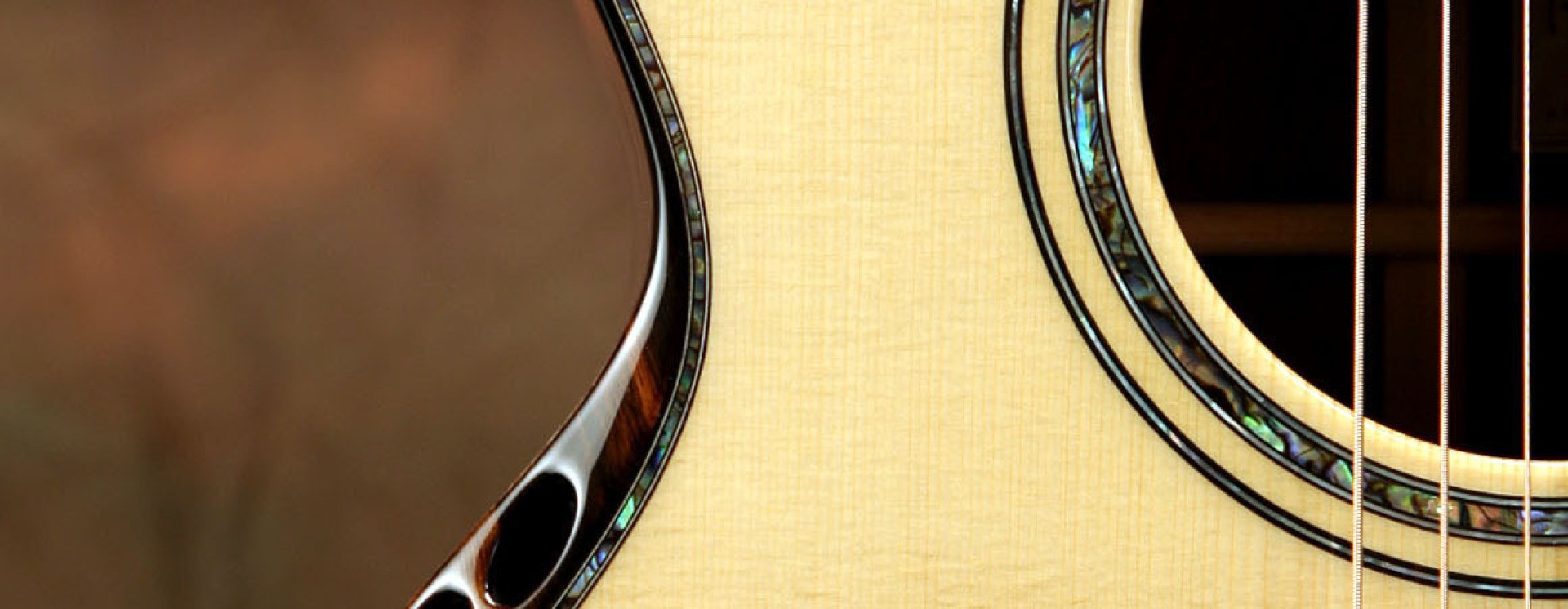TEACHERS & TEACHING
TEACHERS
HARI HAR RAO: SITAR & VOICE
PASADENA CA
https://en.wikipedia.org/wiki/Harihar_Rao Wikipedia
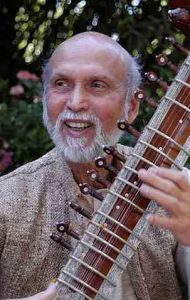
Hari Har Rao was born into a prominent musical family in Mangalore India. He came to the United States in 1964 on a Fulbright Scholarship @ UCLA. He worked in the ethnomusicology department there and privately taught and mentored students of the sitar, voice, and East Indian classical theory. Rao explored a variety of fusions of Indian and Western music which included his work with trumpeter Don Ellis. He was the longest-standing protege as well as a close friend of Sri Ravi Shankar. He and Shankar co-founded the Music Circle, an organization dedicated to promoting Indian classical music, presenting concerts at Occidental College in Eagle Rock, and once each year at Royce Hall (UCLA’s 2000 seat auditorium). He served as the Artistic Director of the Music Circle for 40 years.
I studied with Hari for several years. Like other guitarists that were interested in enriching their understanding of East Indian music and therefore their approach to improvisation, I would sit with Hari (with my guitar and him with his sitar), and study ragas and theory. I transposed what he taught me to my slide guitar playing and it became the foundation for composition and my improvisational style. Hari was my first East Indian teacher, and not only did I learn much as a student, but also as a teacher as well, which I passed on to my own 30 students over the next 30 + years. This was also true in my studies with Ali Akbar Khan and Ratnakar Vyas.
Acknowledgement of Hari Har Rao.
PANDIT RATNAKAR VYAS: SAROD
LONDON, ENGLAND
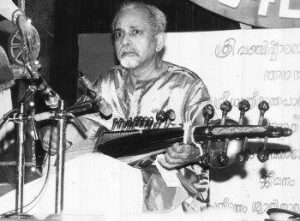
When I first met Ratnakar Vyas it was at a school in central London. I studied with him there for a couple of times and then shifted the lessons to my flat in North Finchley, not too far from where he lived. At the school in London, he wasn’t earning very much per lesson, and it did not appear to me that the teachers were respected. For example: after several lessons with him Ratnakar took me down to the basement of the school where a lesson was in progress. The basement was stark, we sat on a Naugahyde couch without legs! and there was a bare lightbulb hanging from the ceiling. Something about the physical setting raised a red flag for me.
However, on the flip side, the lesson that was taking place (between a vocal teacher and a tabla student) was quite remarkable. The teacher had a tambura (stringed drone instrument) lying on its side which he plucked with the fingers of his right hand. He then sang the rhythms (taal) that he was teaching the tabla student: first at a relatively slow to medium speed, followed by a rapid and challenging tempo. It was beautiful to be a part of the experience.
As Ratnakar lived nearby me, I changed the venue to having lessons at my flat. By hosting him at my flat I also could make tea and lunch for him as well as making sure that all the tuition would go to him. At the beginning and end of each session, I arranged for a mini-cab for his transportation. Lessons averaged about 3 hours. Vyas could also role beetle nut cigarettes if he wanted. As with Hari Har Rao, the connection between teacher and student was very sincere, because Indian music has been played and taught on the planet for over 30,000 years.
The 30,000 year-old Paleolithic and Neolithic cave paintings at the UNESCO world heritage site in Madhya Pradesh show music instruments and dance indicating the beginning of some kind of folk, tribal, & devotional music in India. Indian Classical music, however, both Hindustani (Northern) and Carnatic (Southern) date back to the 13th century. Wikipedia
When studying with all three of my teachers the transmissions were palpable. I had taken a few guitar lessons over the past years (mainly with Martin Simpson& Isaac Guillory in London: both exceptional players and teachers) but I found this depth of substance to be true all the East Indians: Ratnakar Vyas, Hari Har Rao, and Maestro Ali Akbar Khan. There was a deep level of commitment and care, an inherent responsibility regarding the passing on of knowledge, and a strong sense of musical lineage. Though Ratnakar Vyas (at the time that I knew him) was not a rich man materially, he was rich in substance. My lessons with him were a spiritual experience, and I use it as a framework today in my teaching. I am grateful to have studied with him in London.Acknowledgment of Pandit Ratnakar Vyas
USTAD ALI AKBAR KHAN: SAROD
SAN RAFAEL CA
https://en.wikipedia.org/wiki/Ali_Akbar_Khan Wikipedia
https://www.theguardian.com/world/2009/jun/22/obituary-ali-akbar-khan-sarod-music Guardian Obit
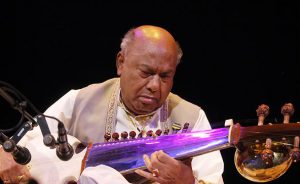
Ali Akbar Khan was a Hindustani classical musician known for his virtuosity in playing the sarod: trained as a classical musician and instrumentalist by his father, he also composed several classical ragas and Film Scores. He established a music school in Calcutta as well as the Ali Akbar College of Music in San Rafael, CA (with a branch in Basel, Switzerland). Khan was instrumental in popularizing Indian classical music in the West, both as a performer and as a teacher. He first came to America in 1955 on the invitation of violinist Yehudi Menuhin (who played with Django Reinhardt). Khan was also a distinguished adjunct professor of music at the University of California, Santa Cruz. He was accorded India’s second-highest civilian honor and nominated five times for the Grammy Award. He was a long-time colleague of Ravi Shankar (sitar) and Alla Rakha (tabla). Wikipedia
While living in Marin County I studied at Khansahib’s school in San Rafael. He led the classes, often with his wife playing tabla. There were two classes that I attended on the nights I would go to his school. Both were filled with students (approximately 75-100 per class). The first class was vocal but it seemed to be attended by all the instrumentalists that attended the second class.
After the 1st class which averaged about an hour (and at the end, everyone was singing at the top of their lungs: very ecstatically and standing up! )there was a short break of about 15 minutes. Then everyone would pile back into the room. We all sat on the floor for obvious reasons. Indian musicians don’t sit in chairs. There was a low dais covered with a large Indian rug. Ali Akbar sat on the right of the stage (as being viewed by the class or Stage Left from the stage) and the tabla player (often his wife, 35 years his junior, Caucasian, and a fine tabla player) would sit on the other side of the dais.
The front of the class was dominated by sitar and sarod players (all senior members of Khansahib’s school). The devotees of Ali Akbar Khan were a bit too exclusive for my tastes. The maestro, on the other hand, was completely ‘inclusive’. Khansahib had already proven himself as a collaborator of East/West fusion ensembles and recordings, court musician for Maharajas in India, live solo performances accompanied by tabla & tambura, many different ensembles with India’s top musicians (including Ravi Shankar and Alla Rakha), and film composer for both Eastern & Western movies.
Of course first and foremost he was a Hindustani (Northern Style), classical sarod player. His training growing up would include 12-16 hours of study and practice daily. The conventional sarod is a 17 to 25-stringed lute-like instrument — four to five main strings used for playing the melody, one or two drone strings, two Chikari strings and nine to eleven sympathetic strings. Sarod: https://en.wikipedia.org/wiki/Sarod Wikipedia. The senior students were not an easy nut to crack, even if you were a professional musician that played guitar, violin, flute, etc. But everyone felt welcome, and that was due to Ali Akbar Khan’s leadership.
In the back of the room, the Western instrumentalists sat. Everyone had a recording device near to them. We recorded the entire lesson. There was also a large chalkboard at the front of the class in which a senior student would transcribe the entire raga and improvisational motifs that were taught by Khansahib at the end of each class. This was done in the Indian solfeggio: Sa Ri Ga Ma Pa Dra Ni Sa (compared to the Western solfeggio: Do Re Me Fa So La Ti Do). Dots above and below the solfeggio indicated what octave the pitch was. The rhythms were indicated in another manner, and regardless all of us had recorded the lesson.
By the time I had begun studying with Khansahib, I had been playing guitar 30 years & I had the blessing of studying with two great teachers prior: Hari Har Rao & Ratnakar Vyas. I did not expect to become a performer of East Indian classical guitarist. I came to class with my guitar tuned to CGCFGC or 151451 which was the way the sarod was tuned. This tuning is DADGAD 1 step lower. For me, it had been the open tuning of choice for decades as it facilitated both FingerStyle and Slide Guitar. I was quite at home with CGCFGC tuning.
I chose to sit against the back wall behind all the senior students (which were in rows close to the dais: 6 deep). Smattered through the room were other non-sitar and no-sarod players: guitar, violin, clarinet, flute, and wood flute. I had a Sony Pro Walkman with a mini stereo mic clipped to my pants at my right knee. When Khansahib (an endearing title of respect for Ali Akbar Khan) would take a seat on the dais, he would make himself comfortable, tune the core, drone, and sympathetic strings and light up a Benson & Hedges 100 in a cigarette holder which he had going most of the lesson!
I have a good ear and had been playing slide guitar in DADGAD for over 20 years. I had sat with Hari Har Rao and Pandit Ratnakar Vyas. I loved slide guitar & had already been convinced that what the East Indian teachers had to share was of the highest value. Even though I sat at the back of the room (mostly because of the comfort of leaning up against the wall plus the fact that the senior students dominated the front of the classroom)I could hear Khansahib perfectly clearly.
The way Ali Akbar taught was that he would select a particular raga to focus on and play short motifs: 7 to 10 notes to the class (all the while smoking!). The class would respond by sending the motifs back. When enough of the class successfully replied in unison, Khan would add on another motif, sending out the first + the 2nd. This would go on until after 45 minutes an extensive melodic line was achieved. At the end of the class, a senior student would transcribe this on the chalkboard. Usually, for the most part, the first students that would send back the motif to the maestro were the senior students dominating the front of the class.
HOWEVER! I was hearing these melodies as well and expressing them in a glissando-like fashion (sliding) on my guitar with a glass or ceramic slide on my left pinky. Most of the time I played somewhat softly but was always keeping up with the senior students. On one occasion I responded way ahead of the senior students and returning the reply over their heads to the maestro got his attention and a literal thumbs up from his wife who was playing tabla, This made me very happy! Many of the senior students turned their heads to the back of the room to find out who this guy was and wtf! I shared a smile with the maestro’s wife and went back to focusing on the next round of motifs. I truly loved being part of the school for about a year while I was living in Mill Valley, which was very near San Rafael. I always felt welcome by the maestro (and his wife).
Acknowledgment & Deep Reverence of Ustad Ali Akbar Khan!
MARTIN SIMPSON: GUITAR & VOICE
RICHMOND ENGAND
https://martinsimpson.com Martin Simpson Official Website
https://en.wikipedia.org/wiki/Martin_Simpson Wikipedia
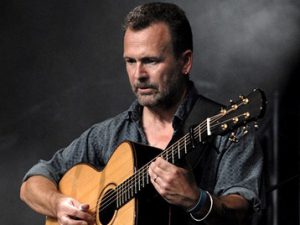
Martin Simpson is a globally known performer and master-class teacher with ties to Richard Thompson, June Tabor, Kelly Joe Phelps, Jackson Browne, Martin Carthy, David Lindley, Steve Miller and many more. There are several links above for one to become familiar with Simpson. During the year that I lived and taught in London, I studied with Martin who held lessons in a small guest house behind his modest residence in Richmond, England just outside of central London. I always enjoyed the trip out to his place as it was a long train ride and a lot of walking.
After a few lessons, my visits became primarily social as well as professional. On an old cassette, I made of a rehearsal one evening you can hear the two of us playing Train 45 (a Folk/BlueGrass standard also known as Reuben’s Train). While Martin and I sat around the kitchen table after dinner with our guitars, his wife and her friend were drying dishes and gossiping at the time. When I listen to the recording today it sounds like our playing was a soundtrack for a live documentary! It brings back good memories of my year in London.
Martin reinforced my concept of tone and articulation. We had a lot in common as we both loved to play in DADGAD, both loved FingerStyle and Slide, and we had a light touch to the way we played. I consider him to be one of my main fingerstyle influences. He’s a fabulous player and teacher: precise and emotional. I consider him to be a friend as well. Acknowledgment of Martin Simpson
ISAAC GUILLORY: GUITAR & VOICE
LONDON ENGLAND
https://www.theguardian.com/news/2001/jan/22/guardianobituaries.robindenselow The Guardian
https://en.wikipedia.org/wiki/Isaac_Guillory Wikipedia
(Live w/John Renbourn) Live at Southbank on the Thames, London
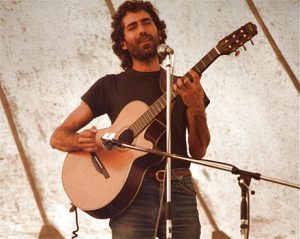
Isaac Guillory was an American ex-patriot living in London. He was a maverick of sorts, a ‘renaissance man’, and was like a brother. He had been living in England for quite a few years, had performed at acoustic venues and festivals all over the country. He was well known and an extremely talented player. I studied with him privately as well at the University of London. He was kind enough to lend me a Martin D-28 S which was a very good guitar for Slide: wide neck & twelve frets to the body [almost like playing on a ‘steel string classical’]. It was very good for low strung guitar tunings and it made my slide work interface more naturally with my studies with sarod.
Isaac was a seasoned solo performer. When he wasn’t driving all over the countryside playing he was in London. He was a fine teacher as well. He taught inspirational clinics on UL’s central London campus and they were always well attended. The University had some great acoustic stairwells and I used to practice in them before and after classes. I was working in several guitar tunings at the time: Standard, Drop D, Dadgad, EAC#EAE, and CGCGCF which I used when I studied with Indian sarod teacher Ratnakar Vyas. The beautiful echos of the stairwells inspired the development of many compositions.
Although Isaac was part of several ensembles in the United States, he focused on solo guitar and vocal work in Britain. The above YouTube links feature about a dozen performances of Isaac solo, and also a beautiful duet with legend John Renbourn. All the links above are excellent biographies and live performances of his work. He died of cancer @ the age of 53 (way too young). I miss him, as do many. Acknowledgment of Isaac Guillory
TEACHING
RICHARD PEIKOFF
FINGERSTYLE, SLIDE GUITAR, HIGH-STRING GUITAR, COMPOSITION, SONGWRITING, THEORY, IMPROVISATION, OPEN TUNINGS
US, UK, INDIA, AUSTRALIA, ISRAEL, CALIFORNIA, COLORADO, HAWAII, CANADA
https://www.facebook.com/richardpeikoffmusic/app/2405167945/ Facebook Music Page (Streaming)
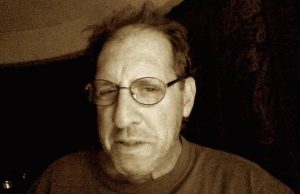
I have been playing the guitar since the age of 11: performing since the age of 13: and teaching since 1987. Whether living overseas or in the United States I’ve averaged 30 students on my roster which has equaled about 80-100 lessons per month averaging from 1 -3 hours per lesson, and master classes averaging 5-6 hours with a snack break midway. Internet lessons average of 90 minutes. I’ve been successful at helping students over the phone in between lessons if they have had trouble with what they were studying. Check-ins such as these are always gratis. I have also published over 300 lessons & tutorials on the Acoustic Guitar Forum (AGF). One need not be a member to access these tutorials. I began posting to the AGF in 2008. Views per lesson have averaged approximately 1000 to 5000 views. The most read tutorial has been John Mayers’ ‘Stop This Train’: 50,000 views.
All of the song tutorials are accurate charts for the beginning, intermediate, and advanced student and focus on songs by such artists as: The Beatles, Chris Smither, Elliott Smith, Jason Mraz, Glen Hansard, Johnny Cash, Dave Matthews, Missy Higgins, Dan Wilson, Eddie Vedder, Dan Tyminski, OldCrow Medicine Show, Gillian Welch, Alison Krauss & Union Station, Cat Stevens, Neil Young, Enanitos Verdes (in Spanish), Ray Charles, The Shins, Mark Knopfler, Foo Fighters, The Church, Paul Brady, Eric Clapton, Willie Nelson, Pink Floyd, Nirvana, Nick Drake, Death Cab for Cutie, Joan Osborne, Pete Townshend, Jeff Buckley, Gordon Lightfoot, and more. A the time that I published ’Stop This Train’ by John Mayer, there was not a single chart online, on any of the digital song/lyric sites, not anywhere. Hence the 50,000 views. And the chart has some complex fingerings.
All chord/lyric charts always include optional fingers so that beginning students can access them as well as advanced and intermediate students. The chord names are harmonically perfect, sometimes giving more than one name for a chord that could be viewed as a polychord. Most of the song charts are in Standard Tuning (ST), however, I’ve also posted charts in alternate tunings and noted when an artist had detuned their guitar, and therefore I would give multiple perspectives. For instance, if an artist had lowered their tuning 1/2 step or 1 whole step, I would present the original chart plus an option for players that wanted to remain in ST. An example of the notes for the John Mayer posting:

John Mayer | Stop This Train
https://www.acousticguitarforum.com/forums/showthread.php?t=100508
|||||
Notes:
‘–‘: 1 bar of 4/4
When indicated, (-5) = no 5th
bpm: 88/92
|||||
E…A…D…G…B…E
6…5…4…3…2…1: Chords (in order of the first appearance)
X…X…0…2…3…0: Dsus2
X…X…0…6…0…7: DM6/7(-5)
X…X…0…6…0…5: D5M7
3…X…0…4…3…2: GM7
3…X…0…6…0…7: G(#4)-5 {Mayer’s fingering with T in bass}
X…X…5…6…0…7: G(#4)-5 {alternative}
3…X…0…6…0…7: Gsus2(#4)-5 {Mayer’s fingering with T in bass}
X…X…5…6…X…5: Gsus2(#4)-5 {alternative}
3…X…0…2…3…0: G6sus2
3…X…0…3…3…2: GmM7 (G minor|major 7)
3…X…0…3…3…0: Gm6
2…X…0…2…3…2: D/F#
0…2…2…1…3…0: E7
X…0…5…7…0…0: A9sus4 {A9sus4 -5}
X…0…5…6…0…0: A9 {A9 -5}
X…0…5…5…5…0: Am7 (C/A)
X…0…5…4…3…0: G/A (Asus9/11)
3…X…0…3…3…1: Gm7
3…X…0…0…0…X: G
X…0…2…2…2…X: A
X…2…0…0…3…X: G/B
X…4…X…2…5…X: A/C# or
X…4…2…2…5…X: A/C# or
X…4…2…2..(2)..X: A/C#
X…X…0…2…3…2: D
X…0…2…2…1…0: Am
0…2…2…0…3…0: Em7
|||||
Intro: [0:00]
Dsus2 DM6/7(-5)– D5M7 Dsus2– (4x)
|||||
Verse: [0:22]
GM7________Gsus2(#4)-5–
__No, I’m not colorblind,
G(#4)-5____G6sus2–________Dsus2 DM6/7(-5)– D5M7 Dsus2–
_I know the world is black and white.
GM7__________Gsus2(#4)-5–
_Try to keep an open mind but,
G(#4)-5____G6sus2–______Dsus2 DM6/7(-5)– D5M7 Dsus2–
_I Just can’t sleep on this tonight.
|||||
Chorus: [0:43]
GmM7___Gm6–
Stop this train,
__GmM7___Gm6–____D/F#–___
I wanna get off and go home again.
_D/F#–_______________E7–____
I can’t take the speed it’s movin’ in;
__E7–___________A9sus4 A9–
I know I can’t, but honest__ly,
______Am7____G/A–___Dsus2 DM6/7(-5)– D5M7 Dsus2–
Won’t someone stop this train?
|||||
Instrumental Break: [1:10]
Dsus2 DM6/7(-5)– D5M7 Dsus2– (2x)
|||||
Verse: [1:15]
GM7____________Gsus2(#4)-5–
_Don’t know how else to say it,
G(#4)-5_____G6sus2–______Dsus2 DM6/7(-5)– D5M7 Dsus2–
_Don’t wanna see my parents go.
GM7_____Gsus2(#4)-5–____G(#4)-5
_One generation’s led the way,
_________G6sus2–_____Dsus2 DM6/7(-5)– D5M7 Dsus2–
For findin’ life out on my own.
|||||
Chorus: [1:36]
GmM7___Gm6–
Stop this train,
__GmM7___Gm6–____D/F#–___
I wanna get off and go home again.
_D/F#–_______________E7–____
I can’t take the speed it’s movin’ in;
__E7–___________A9sus4 A9–
I know I can’t, but honest__ly,
______Am7____G/A–___Dsus2 DM6/7(-5)– D5M7 Dsus2–
Won’t someone stop this train?
|||||
Instrumental Break: [2:03]
Dsus2 DM6/7(-5)– D5M7 Dsus2– (2x)
|||||
Piano Solo: [2:09]
GM7 Gsus2(#4)-5– G(#4)-5 G6sus2– Dsus2 DM6/7(-5)– D5M7 Dsus2– (2x)
|||||
Verse: [2:30]
GM7________Gsus2(#4)-5–
_So scared of gettin’ older,
G(#4)-5__G6sus2–____Dsus2 DM6/7(-5)– D5M7 Dsus2–
_I’m only good at being young.
GM7________Gsus2(#4)-5–
_So I play the numbers game,
___G(#4)-5____G6sus2–_______Dsus2 DM6/7(-5)– D5M7 Dsus2–
To find a way to say that life has just begun.
|||||
Chorus Variation: [2:52]
GM7–____________________
_Had a talk with my old man,
Gm7–___________________
_Said help me understand.
D/F#–________E7–___________
_He said turn 68, you re-negotiate.
|||||
_____GmM7__Gm6–
Don’t stop this train.
GmM7____Gm6–___________D/F#–______
Don’t for a minute change the place you’re in;
_____D/F#–_______________E7–______
And don’t think I couldn’t ever understand,
__E7–_____________A9sus4 A9–
I tried my hand, John honest__ly,
_____Am7__G/A–__Dsus2 DM6/7(-5)– D5M7 Dsus2–
We’ll never stop this train.
|||||
Instrumental Break: [3:29]
Dsus2 DM6/7(-5)– D5M7 Dsus2– (2x)
|||||
Bridge: [3:35]
G_______A–__________G/B__
Once in awhile when it’s good,
____A/C#–___G____
It’ll feel like it should;
___________A–____G/B___
And they’re all still around,
__________A/C#–_____G____
And you’re still safe and sound;
________A–________G/B__
And you don’t miss a thing,
_______A/C#–_________D_____
‘Till you cry when you’re driving,
_Am–_____Em7–______
Away in the dark singing…
|||||
Chorus: [3:56]
GmM7___Gm6–
Stop this train,
__GmM7___Gm6–____D/F#–___
I wanna get off and go home again.
_D/F#–_______________E7–____
I can’t take the speed it’s movin’ in.
__E7–_____________A9sus4 A9–
I know I can’t, ’cause now I __see
___Am7__G/A–___Dsus2 DM6/7(-5)– D5M7 Dsus2–
I’ll never stop this train.
|||||
Instrumental Ride Out: [3:24]
Dsus2 DM6/7(-5)– D5M7 Dsus2– (3x)
|||||
Fade to End: [4:38]
Posting to the AGF has been a voluntary process. I’ve loved doing this. I have sustained a custom profile the entire time by contributing yearly dues. However, anyone can join and/or access any posting without being a paid member. Membership (free or with dues) allows members to access all posts & threads. The AGF URL is https://www.acousticguitarforum.com/forums/index.php. Today the AGF contains roughly 20 categories with the ‘General Acoustic Guitar Discussion’ having the most viewers at any given time.
The AGF is owned by colleague J.R. Rogers. You may need to become a ‘free member’ to access my Home page, the URL is https://www.acousticguitarforum.com/forums/member.php?u=9020. By clicking the ’Statistics’ tab you will be taken to all posts and threads up to 200 that I have contributed. The AGF stops keeping track of a member’s history of postings at 200, but all of my posts are probably closer to 300 (lifetime). Charter membership dues are $25.00 and greatly facilitate the operation of the Forum. Before J.R. Rogers took over the Forum it was known as the Taylor Guitar Forum. Charter Membership includes the information below.
AGF Charter Memberships (https://www.acousticguitarforum.com/forums/faq.php)
For members (non-commercial) who would like to donate to support the operations of the Acoustic Guitar Forum or use the AGF Classifieds, we offer Charter Memberships for $25/yr. These benefits include:
Custom Avatar
Custom Title of your choice
Increased private message storage (100 messages)
Image attachment uploads (up to 50 MB)
Ability to post For-Sale/Want to Buy/Want to Trade items in the AGF Classifieds
Other tutorials & biographical stories that I have published on the AGF include the following. I have also taught roughly 100-200 song tutorials that I did not have time to publish (each publication averaged 6 to 20 hours to complete). Inspiration for the topics came from student requests, years of personal studies of Western and Eastern harmony, and links to original recordings.
5 Minor Scales | 9 Rotations
7 Keys That Exploit Dadgad’s Open Strings
8 Popular Guitar-Keys Table (PDF) | 7 Distilled Features
21 Pentatonic’s in Each Key
35 Ragas: A Sampling Of North & South Indian Scales & Modes
65 Chords in Gsus2 Tuning: DGDGAD
100 Most Basic chords (no barres, almost) + 30 Most Basic Chords
400 Chords in Drop D Tuning
800 + Common & Uncommon ‘Down The Neck Chords’ in Standard Tuning
800 + Dadgad Chords Parts A, B, & C | Sequential Chord Lists By Tonal Center
800 + Dadgad Tutorial & Chords Parts 1, 2, 3, & 4. | Preface & Chord Lists By Key
Drones for Improvisation
East/West Bottleneck Guitar: A Look At Glass & Ceramic Slides & Unorthodox Tunings
Einstein To Martino: Inspirational Quotes
Excerpt: Conversation Between Albert Einstein & Tagore Regarding Science & Music
Homage To John Fahey
Looping in iTunes (For Study & Practice Purposes)
Lydian Sus 4 Tuning: DADG#AD
Making My Taylor 414KCE a Low Strung: CGCFGC Tuning
McCoy Tyner on Music and Life
Music of The Spheres: Hazrat Inayat Khan. ‘Music Is Life Itself.’
My Influences
Naming Chords: Simple & Complex
Nashville & Fredsville Tunings: Their Configurations and Innovators
Perfect Intervals | A Simple Explanation
Phrygian, Phrygian Dominant, 8-Tone Synthetic Mode
Root Position `1st`2nd` & `3rd Inversions & Voicings
Some Background About My Sound
Synthetic Modes | Mahavishnu & Beyond
Triads, Intervals & Fundamentals
Thumbpick Solution
Whole Tone Scales & Chord Extensions
At any given time there ave been 5-10 upper-level intermediate students, advanced students, semi-professional players, and professionals. With students at this level, although we could focus on a particular song, the lessons were more about theory and harmony and their application to songwriting, composition, and improvisation. Studies would primarily take place in Standard Tuning, but many of my advanced students have been interested in Open Tunings and also slide guitar. Therefore it has not been uncommon for us to study in Drop D Tuning, Open D, G, A, and C Tunings, and the very popular tuning of DADGAD. Slide guitar studies have always been something I have offered which is not necessarily something that other teachers specialize in, in addition to what I’ve already mentioned. Regardless of the lesson, the focus has always been on tone, precision, perfect intonation, emotional playing, and original interpretations.
In the same way that my teachers have treated me, especially the East Indian teachers in India, England, and the United States; I have passed this sense of deep listening, support, and acknowledgment forward to all students that I have taught for the past 32 years. And if students need help between lessons (as previously mentioned) they can always access me at no charge for a mini-lesson via email, phone, or Skype. Though I specialize in FingerStyle playing, students studying with the use of a pick have no difficulty in understanding what I am conveying. My approach is a classical sensibility as applied to Folk, Rock, Jazz, Bluegrass, Blues, and New Age.
Feel free to contact me on the page entitled ‘EPILOGUE’. I look forward to speaking with you about advancing your process on the guitar.
All the Best
Richard Peikoff
